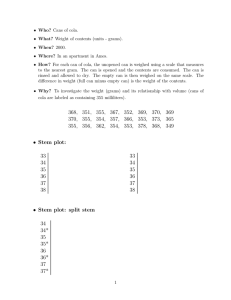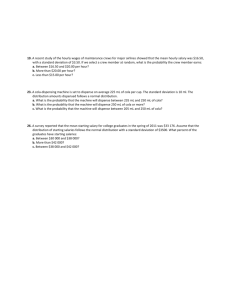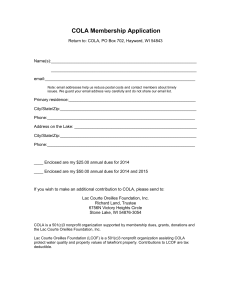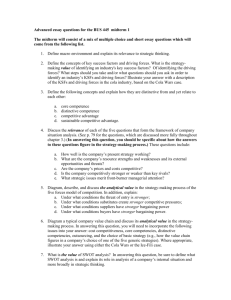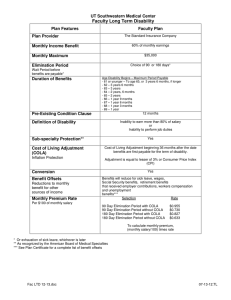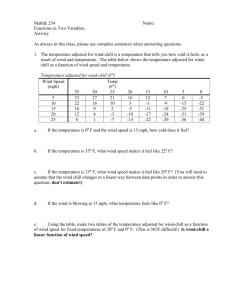TESTING A HYPOTHESIS ABOUT A POPULATION MEAN
advertisement
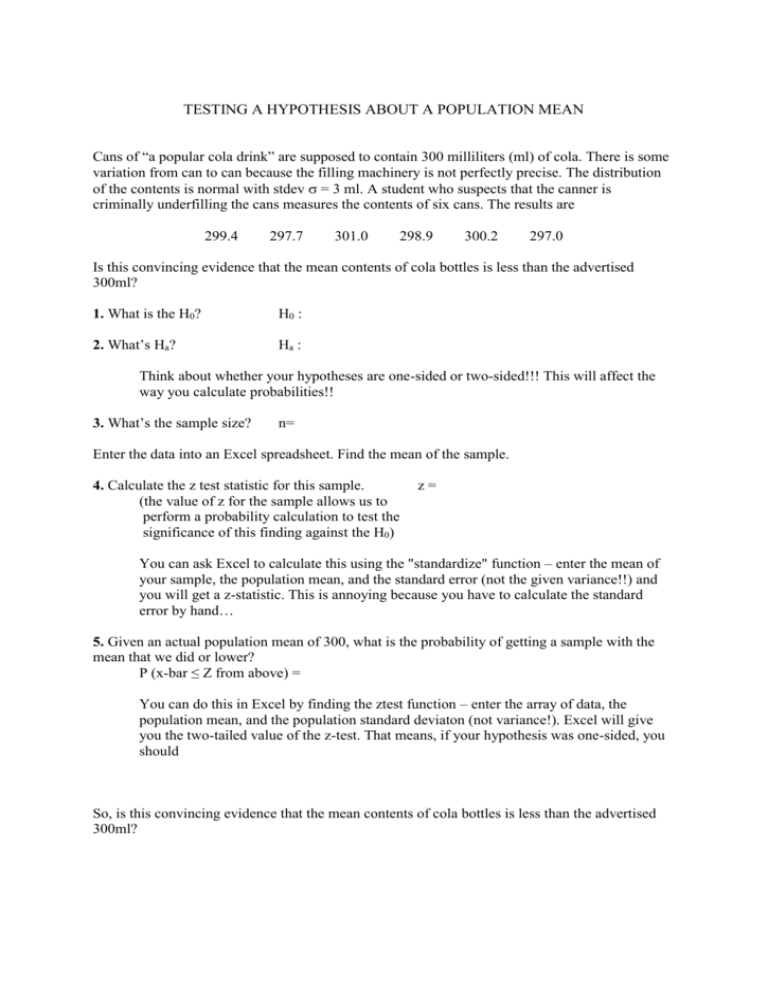
TESTING A HYPOTHESIS ABOUT A POPULATION MEAN Cans of “a popular cola drink” are supposed to contain 300 milliliters (ml) of cola. There is some variation from can to can because the filling machinery is not perfectly precise. The distribution of the contents is normal with stdev = 3 ml. A student who suspects that the canner is criminally underfilling the cans measures the contents of six cans. The results are 299.4 297.7 301.0 298.9 300.2 297.0 Is this convincing evidence that the mean contents of cola bottles is less than the advertised 300ml? 1. What is the H0? H0 : 2. What’s Ha? Ha : Think about whether your hypotheses are one-sided or two-sided!!! This will affect the way you calculate probabilities!! 3. What’s the sample size? n= Enter the data into an Excel spreadsheet. Find the mean of the sample. 4. Calculate the z test statistic for this sample. (the value of z for the sample allows us to perform a probability calculation to test the significance of this finding against the H0) z= You can ask Excel to calculate this using the "standardize" function – enter the mean of your sample, the population mean, and the standard error (not the given variance!!) and you will get a z-statistic. This is annoying because you have to calculate the standard error by hand… 5. Given an actual population mean of 300, what is the probability of getting a sample with the mean that we did or lower? P (x-bar ≤ Z from above) = You can do this in Excel by finding the ztest function – enter the array of data, the population mean, and the population standard deviaton (not variance!). Excel will give you the two-tailed value of the z-test. That means, if your hypothesis was one-sided, you should So, is this convincing evidence that the mean contents of cola bottles is less than the advertised 300ml?
